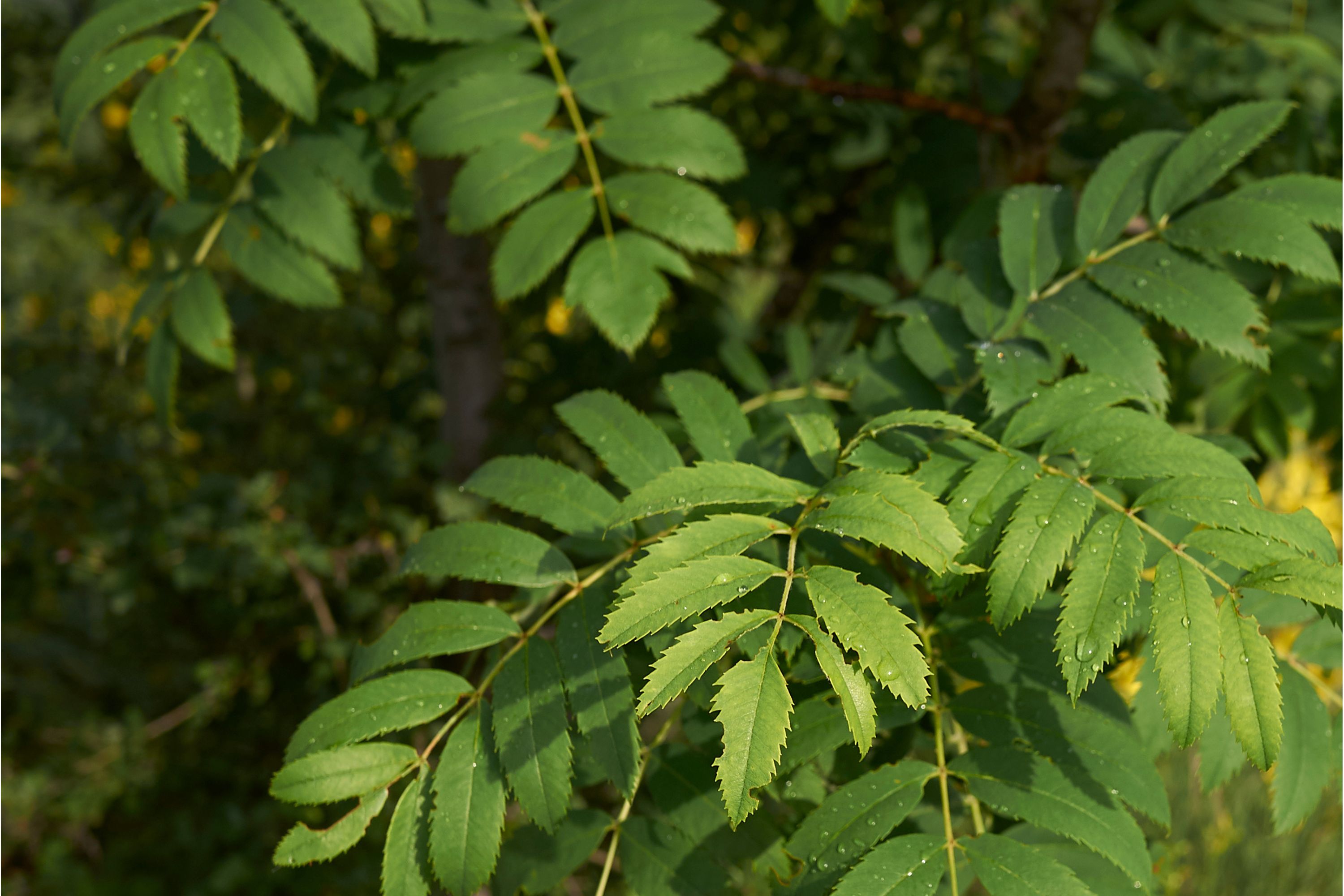Rowan
(Sorbus aucuparia)

Description
Sorbus aucuparia, commonly known as rowan, mountain ash, or European mountain ash, is a deciduous tree species that belongs to the Rosaceae family. It is a popular ornamental tree, with a history of traditional use in herbal medicine and culinary applications. In this article, we will explore the taxonomy, morphology, distribution, habitat, and uses of Sorbus aucuparia. Taxonomy The scientific name of the rowan tree is Sorbus aucuparia L. The genus Sorbus comprises about 100-200 species of trees and shrubs that are widely distributed in the northern hemisphere, including Europe, Asia, and North America. Sorbus aucuparia is also known by several common names, such as rowan, mountain ash, quickbeam, and dogberry. Morphology Sorbus aucuparia is a small to medium-sized tree, which can grow up to 15-20 meters in height. It has a narrow and conical shape, with a dense crown of branches that extends outward from a single trunk. The bark of the tree is smooth and grayish-brown when young, but it becomes rough and scaly with age. The leaves of Sorbus aucuparia are pinnate, with 7-11 leaflets that are ovate or elliptic in shape. The leaflets are serrated at the margins and have a dark green color. In the fall, the leaves turn a bright yellow or orange color, providing a stunning display of autumnal color. The flowers of Sorbus aucuparia are small, white, and fragrant. They appear in dense clusters or corymbs that are 7-12 cm in diameter. The flowers bloom in late spring or early summer, usually in May or June. The fruit of Sorbus aucuparia is a small, round or oval-shaped drupe that is 8-10 mm in diameter. The fruit is initially green, but it turns bright red or orange when ripe. The fruit is edible and has a tart, acidic flavor. It is used in culinary applications, such as jams, jellies, and alcoholic beverages. Distribution and Habitat Sorbus aucuparia is native to Europe, Asia, and northern Africa. It is widely distributed in the temperate and subarctic regions of these continents. In Europe, Sorbus aucuparia is found from the Mediterranean to the Arctic Circle, and from the Atlantic coast to the Ural Mountains. In Asia, it is found from the Caucasus Mountains to the Altai Mountains, and from Siberia to Japan. In North Africa, it is found in the Atlas Mountains of Morocco and Algeria. Sorbus aucuparia is a hardy species that can grow in a wide range of habitats, from sea level to high altitudes. It prefers moist, well-drained soils that are rich in nutrients. It can grow in acidic or alkaline soils, but it prefers neutral to slightly acidic soils. Sorbus aucuparia can tolerate cold temperatures and can grow in areas with a short growing season. It is also tolerant of air pollution and can grow in urban areas. Uses Sorbus aucuparia, also known as rowan, mountain ash, or European mountain ash, has several uses in traditional medicine, culinary applications, and as an ornamental tree. Traditional Medicine: The fruit of Sorbus aucuparia is rich in vitamin C and has been traditionally used to prevent scurvy. It is also used as a remedy for digestive problems such as diarrhea and constipation. The leaves and bark of Sorbus aucuparia have been used to treat fever, coughs, and colds. Culinary Applications: The fruit of Sorbus aucuparia is edible and has a tart, acidic flavor. It is used in culinary applications, such as jams, jellies, and alcoholic beverages. Rowanberry wine and rowanberry brandy are popular alcoholic beverages made from the fruit of the tree. Ornamental Tree: Sorbus aucuparia is a popular ornamental tree, appreciated for its attractive appearance, hardiness, and resistance to pollution. It is often used in landscaping and urban forestry projects to add visual interest and provide shade. The tree's leaves turn a bright yellow or orange color in the fall, providing a stunning display of autumnal color. Woodworking: The wood of Sorbus aucuparia is hard, strong, and fine-grained, making it suitable for woodworking. It has been used to make handles, tool handles, furniture, and decorative items. Wildlife Habitat: Sorbus aucuparia provides food and habitat for a variety of wildlife, including birds, mammals, and insects. The fruit of the tree is a food source for birds, such as thrushes and waxwings, while the leaves and bark provide shelter for insects and small mammals. In summary, Sorbus aucuparia has various uses ranging from traditional medicine, culinary applications, and woodworking to providing an attractive ornamental tree and wildlife habitat.
Taxonomic tree:







